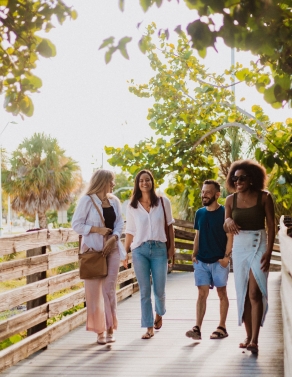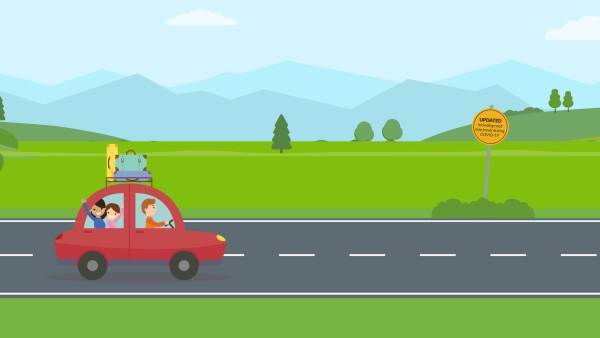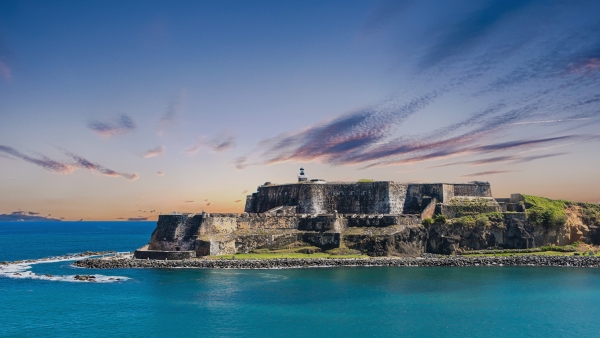As mandatory travel restrictions have eased in some parts of the country, Americans are looking for safe ways to get out and explore. Naturally, a good old-fashioned road trip comes to mind. In fact, Longwoods recently found that among Americans who are planning to travel, the majority (61%) will travel by car.
Many destinations are eager tap into this trend, so travelers are currently being flooded with road trip marketing. How do you cut through all the noise and set your destination apart? Read on for ideas on how to delve deeper into the “why” behind road trips and get creative in your targeting and storytelling strategies.
Last-Minute Plans
Data across several booking engines suggests that the majority of travelers are currently booking trips very close to when they plan to depart: certainly within the same month and often within the same week or day. At the moment, this makes complete sense. It’s difficult to predict how the pandemic will continue to unfold or affect travel in the more distant future, so planning last-minute helps reduce travelers’ risk and uncertainty. Road trips lend themselves very well to this shortened planning window, as most road trippers (70% according to Longwoods) will use their own cars. They don’t need to book transportation in advance, and they have lots of freedom to depart and return on their own schedule. Here are a few ways you can make the decision easy for these spontaneous road-trip planners:
- This is a no-brainer: Promote last-minute packages and deals from local lodging, dining and attraction partners on your website, social media channels and in e-newsletters.
- Emphasize how accessible your destination is by road. Remind travelers in your target drive markets how quickly and easily they could be enjoying a last-minute getaway in your destination.
- With many tech-savvy road trippers making impulsive plans via smartphone, ensure the mobile booking/planning interface on your site is clear, simple and seamless. This audience is short on time to plan, so you don’t want to risk losing their attention by presenting a clunky, slow or frustrating user experience.
One-Tank Trips
Amid ongoing economic uncertainty, many consumers are paying closer attention to their budgets, especially for discretionary spending like travel. Road trips happen to be one of the most wallet-friendly ways to get away, especially if you don’t plan to go too far. Highlight this by creating some “one-tank trip” itineraries for your local and drive markets that are within a distance that won’t exceed one tank of gas round-trip. This approach has the added bonus of promoting social distancing, as fewer stops for gas mean fewer social interactions. Another advantage of these shorter road trips is that they allow additional time for fun and exploration along the way. Without the pressure to clock 500 miles in one day, road trippers have time to take it easy and appreciate scenic overlooks, picnic spots, roadside attractions and other hidden gems as part of the journey.
Roads Less Traveled
When visitors arrive and depart via plane, they’re often hitting hot spots and missing out on the lesser-known and lesser-visited corners of your destination—especially if they haven’t rented a car. Road trippers have much more flexibility and ability to visit remote places, so this is the perfect time to shine the spotlight on your destination’s farther-flung treasures. With health and safety top-of-mind, travelers are also hungry for wide open spaces, fresh air and an escape from civilization. Create and promote itineraries for Scenic Byways in your region and emphasize any off-the-beaten-path outdoor experiences and lodging options that are reachable by car. This is also a good way to appeal to local audiences who are looking for ideas for exploring different areas of their own backyard.
Slow Tourism
Slow travel/slow tourism is gaining momentum. Like the “slow food” movement, slow travel is all about mindfulness and sustainability over speed and convenience. The focus for slow travelers is on spending intentional and prolonged time in one place—basically the opposite of frantically snapping selfies and checking Insta-famous places off your bucket list. Without the pressure to catch flights, road trips allow for the flexibility to travel at this more relaxed and mindful pace. Think about the ways your destination can appeal to slow-travel road trippers. Emphasize the advantages and options of a longer stay, including increased sustainability, more meaningful support of local communities, as well as more authentic experiences and connections. With more of the population working remotely and as so-called “digital nomads,” you can also highlight the ease of working remotely from your destination.




